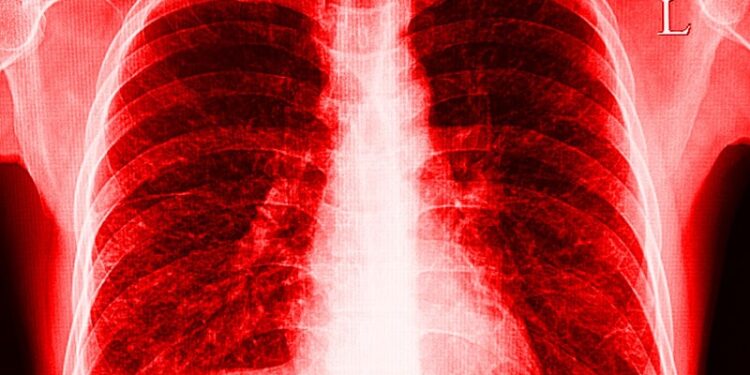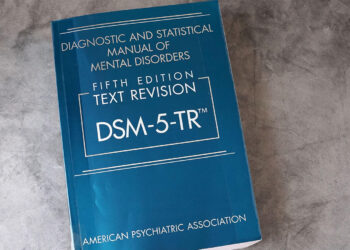TOPLINE:
Despite patients sharing a usual interstitial pneumonia (UIP) pattern on lung CT scans, patients with connective tissue disease-related interstitial lung disease (CTD-ILD) demonstrated a slower decline in lung function and longer transplant-free survival than those with idiopathic pulmonary fibrosis (IPF). However, varying results were reported for those with fibrotic hypersensitivity pneumonitis (FHP).
METHODOLOGY:
- Researchers assessed whether the rate of decline in forced vital capacity (FVC) and transplant-free survival differ among patients with any major subtype of ILD despite sharing a similar UIP pattern on CT.
- They analyzed data of 860 patients (median follow-up duration, 18.6 months) from a PF registry and 1578 patients (median follow-up duration, 17.9 months) patients from a meta-cohort of ILD research studies; the patients were primarily from the US and UK who were diagnosed with either IPF, FHP, or CTD-ILD.
- CT was performed and based on the fibrotic pattern, patients were categorized into five groups: IPF (reference), FHP without a UIP pattern, FHP with a UIP pattern, CTD without a UIP pattern, and CTD with a UIP pattern.
- The annual rate of decline in FVC and 5-year transplant-free survival were determined.
TAKEAWAY:
- Patients with CTD-ILD with a UIP CT pattern showed a significantly slower rate of decline in FVC than those with IPF in both the registry cohort (-34.4 vs -158.4 mL/y; P = .008) and meta-cohort (-53.1 vs -185.9 mL/y; P < .0001).
- In the registry cohort, patients with CTD-ILD with (hazard ratio [HR], 0.50; 95% CI, 0.29-0.85) and without (HR, 0.28; 95% CI, 0.17-0.45) a UIP CT pattern had a lower risk for 5-year transplant-free mortality than those with IPF. This finding was also true for the meta-cohort.
- In both cohorts, the rate of decline in FVC in patients with FHP with a UIP CT pattern did not significantly differ from that in patients with IPF. However, those with FHP without a UIP CT pattern showed a slower rate of decline in FVC in the meta-cohort.
- Patients with FHP without a UIP CT pattern demonstrated a significantly better rate of transplant-free survival than those with IPF in both cohorts, while those with a UIP pattern showed improved survival only in the meta-cohort.
IN PRACTICE:
“Our findings may have important clinical implications and argue against extrapolating clinical outcomes of IPF to other ILDs with a UIP CT pattern, particularly when estimating prognosis or devising management plans,” the authors wrote.
SOURCE:
This study was led by John S. Kim, MD, University of Virginia School of Medicine, Charlottesville, Virginia. It was published online on June 8, 2025 in Thorax.
LIMITATIONS:
The PFF-PR cohort had a considerably smaller FHP-UIP subgroup, potentially limiting the statistical power for FHP analyses. The research cohorts had uneven proportions of patients with ILD subtypes, potentially affecting the replication of the findings. Most participants self-identified as White individuals and were from the US, introducing potential selection bias and limiting generalizability.
DISCLOSURES:
The study did not receive any specific funding. The lead author was supported by grants from the National Institute of Heart, Lung, and Blood Institute. Multiple authors disclosed receiving consulting fees, speaker honoraria, personal fees, grants, and research support from and having other ties with various pharmaceutical companies, including Boehringer Ingelheim, Roche/Genentech, and others.
This article was created using several editorial tools, including AI, as part of the process. Human editors reviewed this content before publication.
Source link : https://www.medscape.com/viewarticle/interstitial-lung-disease-subtypes-are-associated-distinct-2025a1000ioi?src=rss
Author :
Publish date : 2025-07-15 12:03:00
Copyright for syndicated content belongs to the linked Source.











